Rome – The Eternal City
1. Colosseum: Rome’s Timeless Icon
The Colosseum, also known as the Flavian Amphitheatre, stands as one of the most iconic symbols of Ancient Rome and a testament to its architectural ingenuity and cultural legacy. Located in the heart of Rome, Italy, this monumental amphitheater has captivated visitors for centuries with its grandeur and history.
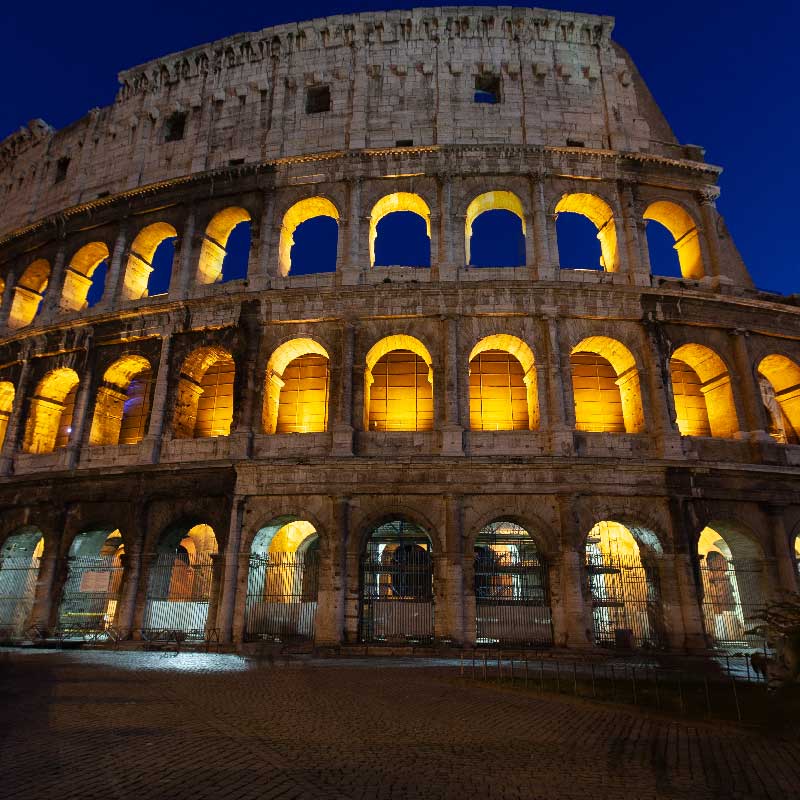
Historical Significance
The Colosseum was commissioned by Emperor Vespasian of the Flavian Dynasty around 70–72 AD and completed under his successor, Titus, in 80 AD. It was constructed as a gift to the Roman people, reflecting the empire’s power, wealth, and architectural prowess. The Colosseum served as a venue for public spectacles, including gladiatorial games, animal hunts, and even mock naval battles.
The amphitheater symbolized Rome’s ability to entertain and unite its people while demonstrating the emperors’ generosity. It also became a stage for showcasing Rome’s dominance by using exotic animals and enslaved people from conquered territories.
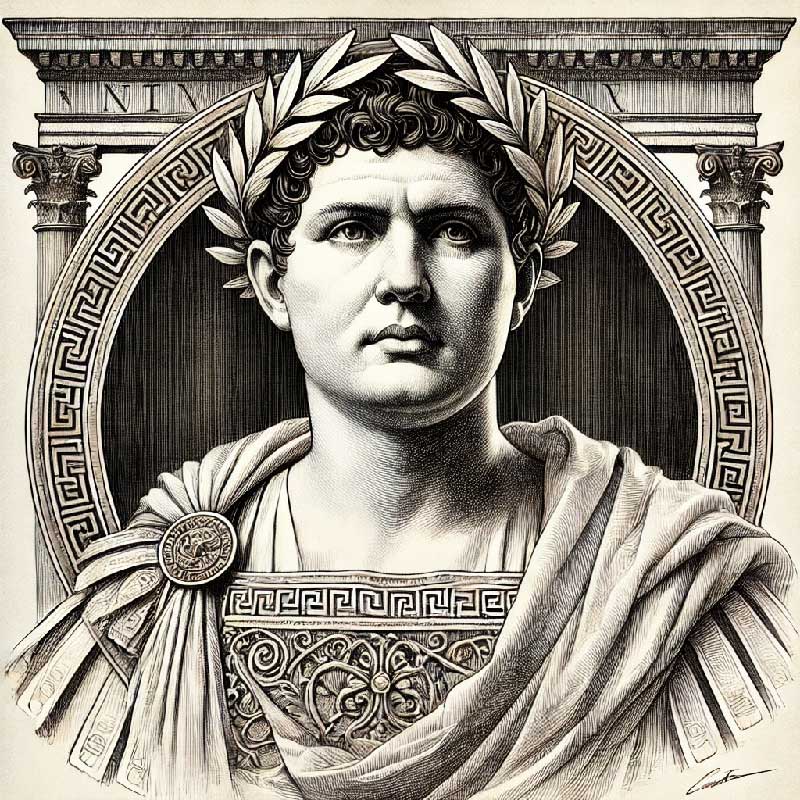
Architectural Features
- Scale and Design:
- The Colosseum is an elliptical structure measuring 189 meters (615 feet) long, 156 meters (510 feet) wide, and 50 meters (164 feet) high.
- It could hold up to 50,000–80,000 spectators, making it the largest amphitheater of its time.
- Materials:
- Constructed primarily of travertine limestone, tuff (volcanic rock), and concrete, the Colosseum was a masterpiece of Roman engineering.
- Bronze clamps were used to hold stones together, many of which were later removed, leaving pockmarks visible today.
- Innovative Architecture:
- The Colosseum featured three tiers of arches adorned with columns in different architectural styles: Doric, Ionic, and Corinthian.
- Its hypogeum (underground network) included tunnels and chambers for holding animals, gladiators, and stage machinery.
- A sophisticated velarium (awning system) provided shade for spectators, showcasing Roman engineering brilliance.
Major Events
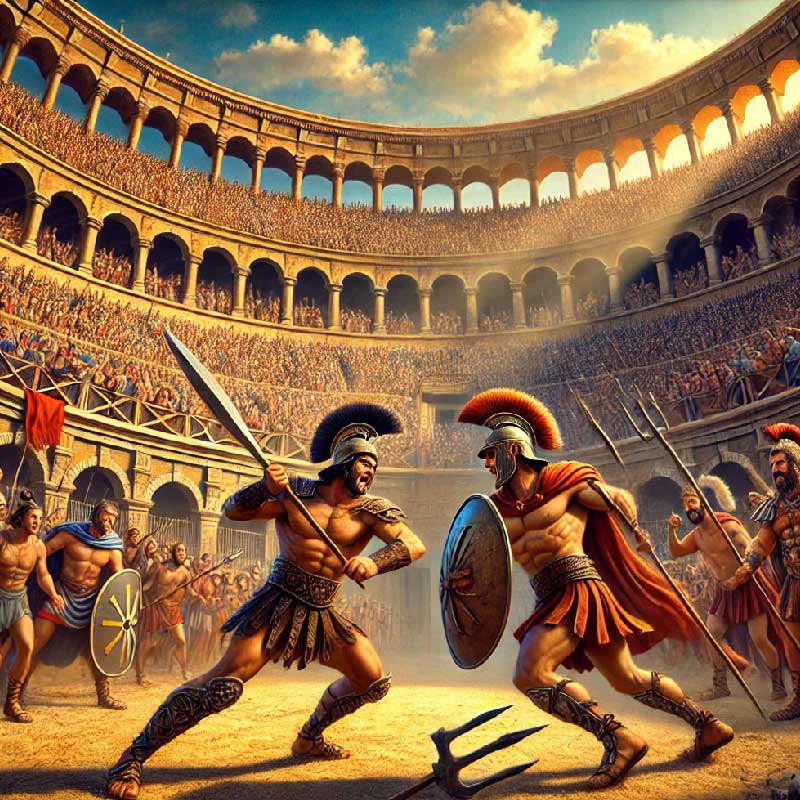
The Colosseum hosted a wide variety of events, often aimed at entertaining and controlling the masses through “bread and circuses” policies:
- Gladiatorial Games: Professional fighters, often enslaved people or prisoners of war, battled to the death.
- Animal Hunts: Exotic animals such as lions, elephants, and crocodiles were hunted or pitted against humans.
- Mock Naval Battles: Before the hypogeum was added, the arena could be flooded for naumachiae, recreations of naval battles.
- Public Executions: The Colosseum was also used for gruesome spectacles where criminals were executed.
These events often lasted for days and attracted thousands of spectators, reflecting the Romans’ love for grand displays of power and entertainment.
The Colosseum Today
- Preservation and Restoration:
- Over the centuries, the Colosseum faced earthquakes, stone robbing, and weathering, leaving much of its original structure damaged.
- Restoration efforts began in the 19th century and continue today to preserve this UNESCO World Heritage Site.
- Tourist Attraction:
- The Colosseum attracts over 7 million visitors annually, making it one of the most visited landmarks in the world.
- It is a centerpiece of the Roman Forum and Palatine Hill archaeological area, offering a glimpse into Ancient Rome’s grandeur.
- Cultural Symbol:
- Today, the Colosseum symbolizes not only Roman history but also the endurance of culture and architecture.
- It serves as a backdrop for modern events, including concerts and cultural celebrations.
Travel Tips
- Tickets: Purchase a combined ticket for the Colosseum, Roman Forum, and Palatine Hill to save time and money.
- Best Time to Visit: Arrive early in the morning or late in the afternoon to avoid crowds.
- Guided Tours: Opt for a guided tour or an audio guide to gain deeper insights into the Colosseum’s history.
- Nearby Attractions: Pair your visit with a walk through the Roman Forum and Capitoline Hill for a full historical experience.
The Colosseum remains a powerful symbol of Rome’s grandeur and an enduring testament to the ingenuity of Roman engineering. Whether you’re marveling at its architectural brilliance or imagining the roar of the ancient crowds, the Colosseum offers an unparalleled journey into the past. It’s not just a historical site—it’s a portal to Ancient Rome, standing proud as one of the greatest wonders of the world.
2. Roman Forum: The Heart of Ancient Rome
- Description:
Adjacent to the Colosseum, the Roman Forum was the epicenter of Roman political, commercial, and social life. Dating back to 500 BC, this sprawling site includes temples, arches, and basilicas that tell the story of Rome’s evolution. Notable landmarks include the Temple of Saturn, the Arch of Titus, and the Curia Julia, the Senate’s meeting place. - Travel Tip:
Visit early in the morning or late in the afternoon to avoid crowds and enjoy softer lighting for photographs.
3. Pantheon: Agrippa’s Masterpiece
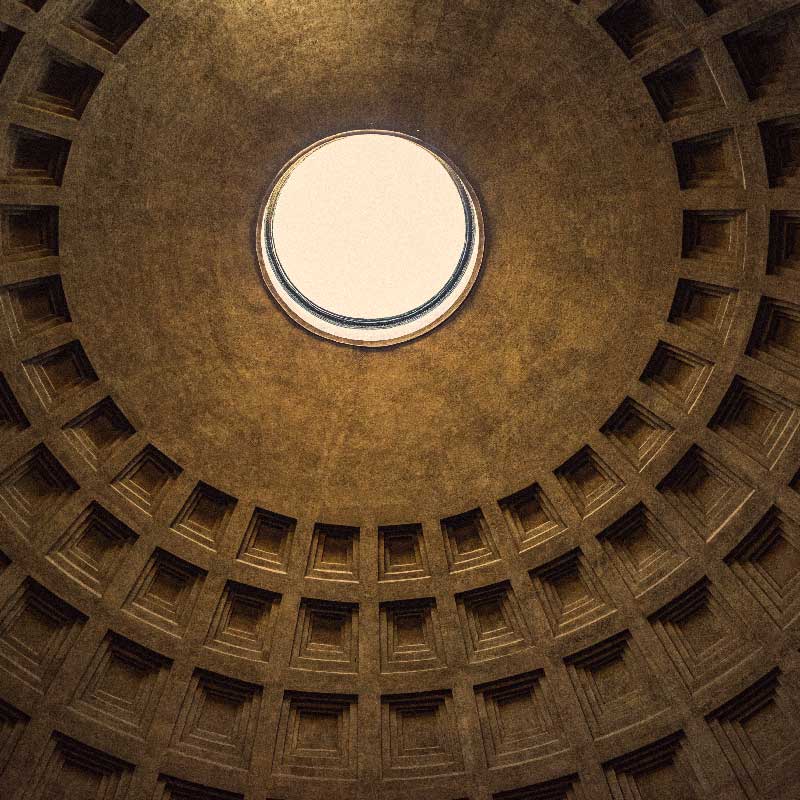
- Description:
Originally built by Marcus Agrippa in 27 BC and rebuilt by Emperor Hadrian around 120 AD, the Pantheon is a temple dedicated to all Roman gods. Its most striking feature is the dome, still the largest unreinforced concrete dome in the world. The central oculus, open to the sky, symbolizes the connection between the heavens and Earth. - Travel Tip:
Entry is free, but guided tours provide fascinating insights into its architectural innovations and religious significance.
4. Campo de’ Fiori: A Vibrant Market Square
- Description:
Once the site of public executions, Campo de’ Fiori is now a bustling square known for its morning markets selling fresh produce, flowers, and local goods. By night, it transforms into a lively hub for dining and socializing. - Travel Tip:
Visit in the morning for authentic market vibes, and return in the evening for a laid-back aperitivo experience.
5. Fontana di Trevi: A Baroque Masterpiece
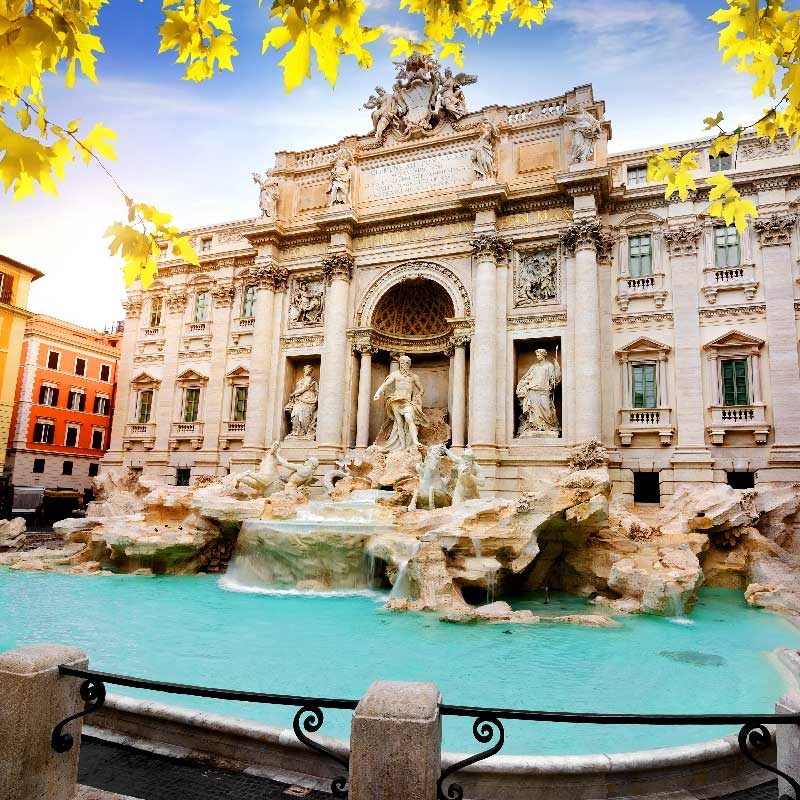
- Description:
The Trevi Fountain, completed in 1762, is one of Rome’s most iconic landmarks. Designed by Nicola Salvi, its dramatic sculptures depict Neptune commanding the waters. Tradition holds that tossing a coin into the fountain ensures your return to Rome. - Travel Tip:
Visit early in the morning or late at night to avoid the crowds and experience the fountain’s magic in peace.
Dining Recommendations in Rome
- Roscioli: Famous for its traditional Roman carbonara and extensive wine list.
- Trattoria Da Enzo al 29: A cozy spot in Trastevere known for its cacio e pepe and tiramisu.
- La Pergola: Rome’s only 3-Michelin-starred restaurant, offering unparalleled views and fine dining.
- Campo de’ Fiori Markets: Grab fresh ingredients for a picnic or try street food like porchetta.
Accommodations in Rome
- Hotel Artemide: Centrally located with modern amenities and a rooftop bar.
- Hotel de Russie: A luxurious option near Piazza del Popolo, known for its lush gardens.
- Casa Mia in Trastevere: A charming boutique guesthouse in the heart of Trastevere.
- Budget Option: The Beehive offers eco-friendly accommodations close to Termini Station.
Travel Tips for Rome
- Transportation:
- Use public transport (metro, buses, and trams) to navigate the city efficiently.
- Walk as much as possible to truly experience Rome’s charm.
- Best Time to Visit:
- Spring (April-May) and Fall (September-October) for pleasant weather and fewer crowds.
- What to Wear:
- Comfortable shoes are essential for walking on cobblestone streets.
Rome, with its blend of ancient history and modern vibrancy, offers something for everyone. From the awe-inspiring Colosseum to the lively Campo de’ Fiori, every corner of the city tells a story. Start your Italian journey here and immerse yourself in the timeless magic of The Eternal City. Let me know your impressions from Rome, if you ever travelled there or ask about everything you are interested in, in the comments below. Ciao!

Good https://is.gd/N1ikS2
Good https://is.gd/N1ikS2
Cool partnership https://shorturl.fm/XIZGD
https://shorturl.fm/m8ueY
https://shorturl.fm/N6nl1
https://shorturl.fm/YvSxU
https://shorturl.fm/5JO3e
https://shorturl.fm/j3kEj
https://shorturl.fm/oYjg5
https://shorturl.fm/a0B2m
https://shorturl.fm/6539m
https://shorturl.fm/5JO3e
https://shorturl.fm/m8ueY
https://shorturl.fm/a0B2m
https://shorturl.fm/bODKa
https://shorturl.fm/YvSxU
https://shorturl.fm/XIZGD
https://shorturl.fm/N6nl1
https://shorturl.fm/YZRz9
https://shorturl.fm/DA3HU
https://shorturl.fm/0EtO1
https://shorturl.fm/TDuGJ
https://shorturl.fm/xlGWd
https://shorturl.fm/xlGWd
https://shorturl.fm/f4TEQ
Promote our products and earn real money—apply today! https://shorturl.fm/DzXB1
Become our affiliate and watch your wallet grow—apply now! https://shorturl.fm/fpzyf
Start earning passive income—join our affiliate network today! https://shorturl.fm/H9gMq
Turn traffic into cash—apply to our affiliate program today! https://shorturl.fm/BTaHl
Boost your earnings effortlessly—become our affiliate! https://shorturl.fm/On4gR
Share your unique link and cash in—join now! https://shorturl.fm/7vmoI
Turn your network into income—apply to our affiliate program! https://shorturl.fm/riVAe
Become our partner and turn clicks into cash—join the affiliate program today! https://shorturl.fm/wA02I
Refer and earn up to 50% commission—join now! https://shorturl.fm/Yod0w
Join our affiliate family and watch your profits soar—sign up today! https://shorturl.fm/rsHFw
Share our products, earn up to 40% per sale—apply today! https://shorturl.fm/y3Czo
Start profiting from your traffic—sign up today! https://shorturl.fm/cJ9nN
Promote our products and earn real money—apply today! https://shorturl.fm/O32Kb
Monetize your audience with our high-converting offers—apply today! https://shorturl.fm/NWl4c
Join our affiliate program and watch your earnings skyrocket—sign up now! https://shorturl.fm/NBSU4
Boost your income—enroll in our affiliate program today! https://shorturl.fm/34iW4
Join our affiliate community and maximize your profits—sign up now! https://shorturl.fm/YyN76
Tap into a new revenue stream—become an affiliate partner! https://shorturl.fm/TKRlx
Become our partner and turn clicks into cash—join the affiliate program today! https://shorturl.fm/JcxVX
Boost your income—enroll in our affiliate program today! https://shorturl.fm/cliZe
Join our affiliate community and maximize your profits! https://shorturl.fm/8asfx
Become our partner now and start turning referrals into revenue! https://shorturl.fm/niFvq
Turn referrals into revenue—sign up for our affiliate program today! https://shorturl.fm/FILDf
Your network, your earnings—apply to our affiliate program now! https://shorturl.fm/WTdDj
Turn traffic into cash—apply to our affiliate program today! https://shorturl.fm/FVdzv
Join our affiliate community and start earning instantly! https://shorturl.fm/Q2xqY
Tap into unlimited earnings—sign up for our affiliate program! https://shorturl.fm/VUhIW
Earn up to 40% commission per sale—join our affiliate program now! https://shorturl.fm/RJJ4i
Maximize your earnings with top-tier offers—apply now! https://shorturl.fm/08KQk
Unlock exclusive affiliate perks—register now! https://shorturl.fm/nLIYV
Start sharing our link and start earning today! https://shorturl.fm/53AER
Partner with us and enjoy recurring commission payouts! https://shorturl.fm/8U7i4
Tap into a new revenue stream—become an affiliate partner! https://shorturl.fm/obDBd
Start earning every time someone clicks—join now! https://shorturl.fm/3o2qW
Partner with us for high-paying affiliate deals—join now! https://shorturl.fm/Dbm5b
Join our affiliate family and watch your profits soar—sign up today! https://shorturl.fm/kIsmH
Partner with us for high-paying affiliate deals—join now! https://shorturl.fm/Dbm5b
Start sharing, start earning—become our affiliate today! https://shorturl.fm/gDk1G
Start sharing, start earning—become our affiliate today! https://shorturl.fm/gDk1G
Monetize your audience—become an affiliate partner now! https://shorturl.fm/wUSvU
Share your link, earn rewards—sign up for our affiliate program! https://shorturl.fm/iwLa3
Join our affiliate program today and start earning up to 30% commission—sign up now! https://shorturl.fm/wwKhb
Partner with us and enjoy recurring commission payouts! https://shorturl.fm/tWAfL
Share your link and rake in rewards—join our affiliate team! https://shorturl.fm/YjwPR
https://shorturl.fm/Q2FY3
https://shorturl.fm/GPJV8
https://shorturl.fm/UdQFq
https://shorturl.fm/Syv2r
https://shorturl.fm/6n3FO
https://shorturl.fm/n2Tqo
https://shorturl.fm/DJwjf
https://shorturl.fm/qPzi3
https://shorturl.fm/JDYKy
https://shorturl.fm/ffd1K
https://shorturl.fm/TAfm1
https://shorturl.fm/Kok31
https://shorturl.fm/GA5XT
https://shorturl.fm/bXwJ6
https://shorturl.fm/rnNYz
https://shorturl.fm/Yg92k
https://shorturl.fm/DK7Vf
https://shorturl.fm/I1Q2N
https://shorturl.fm/gMsH0
https://shorturl.fm/zmEXM
https://shorturl.fm/RwnEv
https://shorturl.fm/4M1nB
https://shorturl.fm/kWb2t
https://shorturl.fm/G1KDi
https://shorturl.fm/zZGbO
https://shorturl.fm/jHiGA
https://shorturl.fm/nJylH
https://shorturl.fm/7SkBW
https://shorturl.fm/n0e5T
https://shorturl.fm/mRq9O
https://shorturl.fm/aSuaU
https://shorturl.fm/UbNjd
https://shorturl.fm/Lp4pp
https://shorturl.fm/D3jQ8
https://shorturl.fm/jhILm
https://shorturl.fm/ueAxo
https://shorturl.fm/DTnsw
https://shorturl.fm/3mvBX
https://shorturl.fm/8dI5c
https://shorturl.fm/9MnBi
https://shorturl.fm/xtrs4
https://shorturl.fm/KKYP4
https://shorturl.fm/hjUpK
https://shorturl.fm/BYZKr
https://shorturl.fm/tALG5
https://shorturl.fm/1ZRrZ
https://shorturl.fm/wVn3M
https://shorturl.fm/hAqR9
https://shorturl.fm/m7QGX
https://shorturl.fm/CuNdh
https://shorturl.fm/KQX1N
https://shorturl.fm/a4aZ6
https://shorturl.fm/6Dsvd
https://shorturl.fm/Y1YZT
https://shorturl.fm/ySq9F
https://shorturl.fm/ZTZ9u
https://shorturl.fm/aScRC
https://shorturl.fm/XxNaQ
https://shorturl.fm/ZFBWi
https://shorturl.fm/A9sux
https://shorturl.fm/AxJaZ
https://shorturl.fm/ENB6q
https://shorturl.fm/YMvY3
https://shorturl.fm/uM1gm
https://shorturl.fm/GVfeW
https://shorturl.fm/qyYhW
https://shorturl.fm/Q82df
https://shorturl.fm/bCpmx
https://shorturl.fm/sWHGy
https://shorturl.fm/bzkF7
https://shorturl.fm/eFBVN
https://shorturl.fm/AX3I7
https://shorturl.fm/yvzwA
https://shorturl.fm/3MJtq
https://shorturl.fm/kMKY3
https://shorturl.fm/yBBsc
https://shorturl.fm/NQ0oZ
https://shorturl.fm/9VeZg
https://shorturl.fm/ensvK
https://shorturl.fm/a7JeA
https://shorturl.fm/DA36S
https://shorturl.fm/ihXHZ
https://shorturl.fm/dOuM8
https://shorturl.fm/owOWp
https://shorturl.fm/l3mTN
https://shorturl.fm/75mXN
https://shorturl.fm/PrxC8
https://shorturl.fm/eSwK5